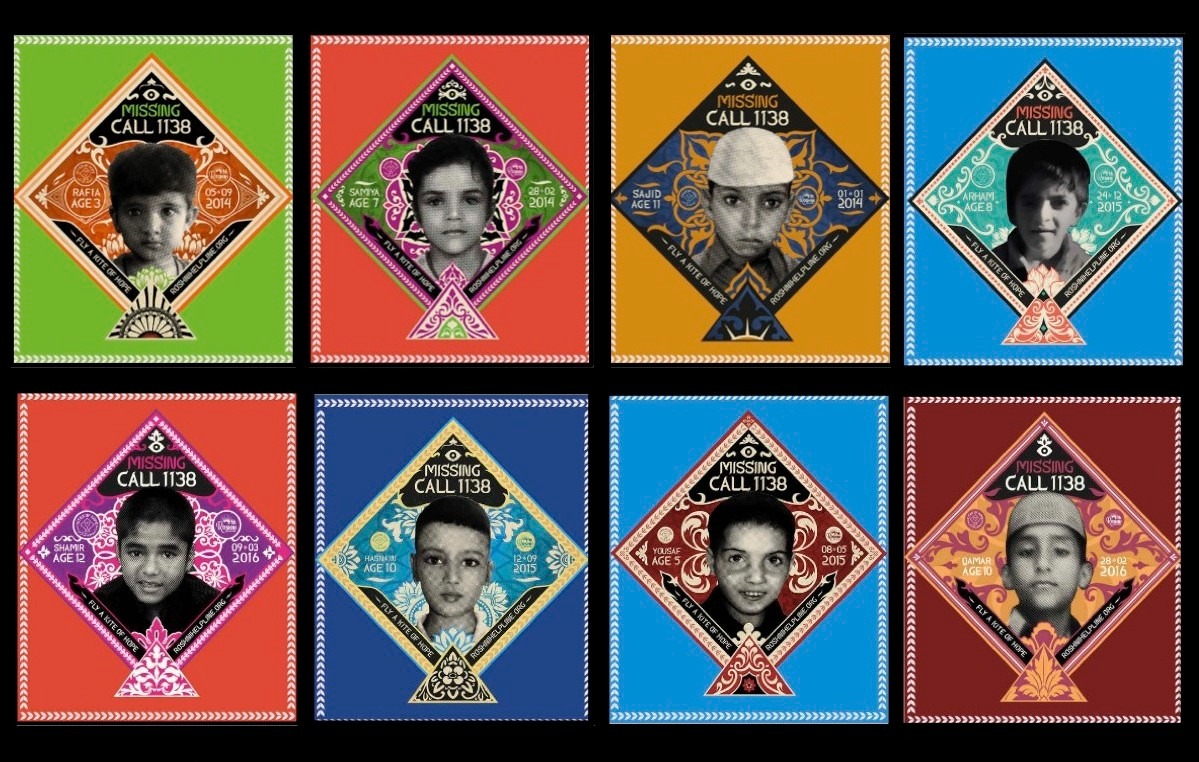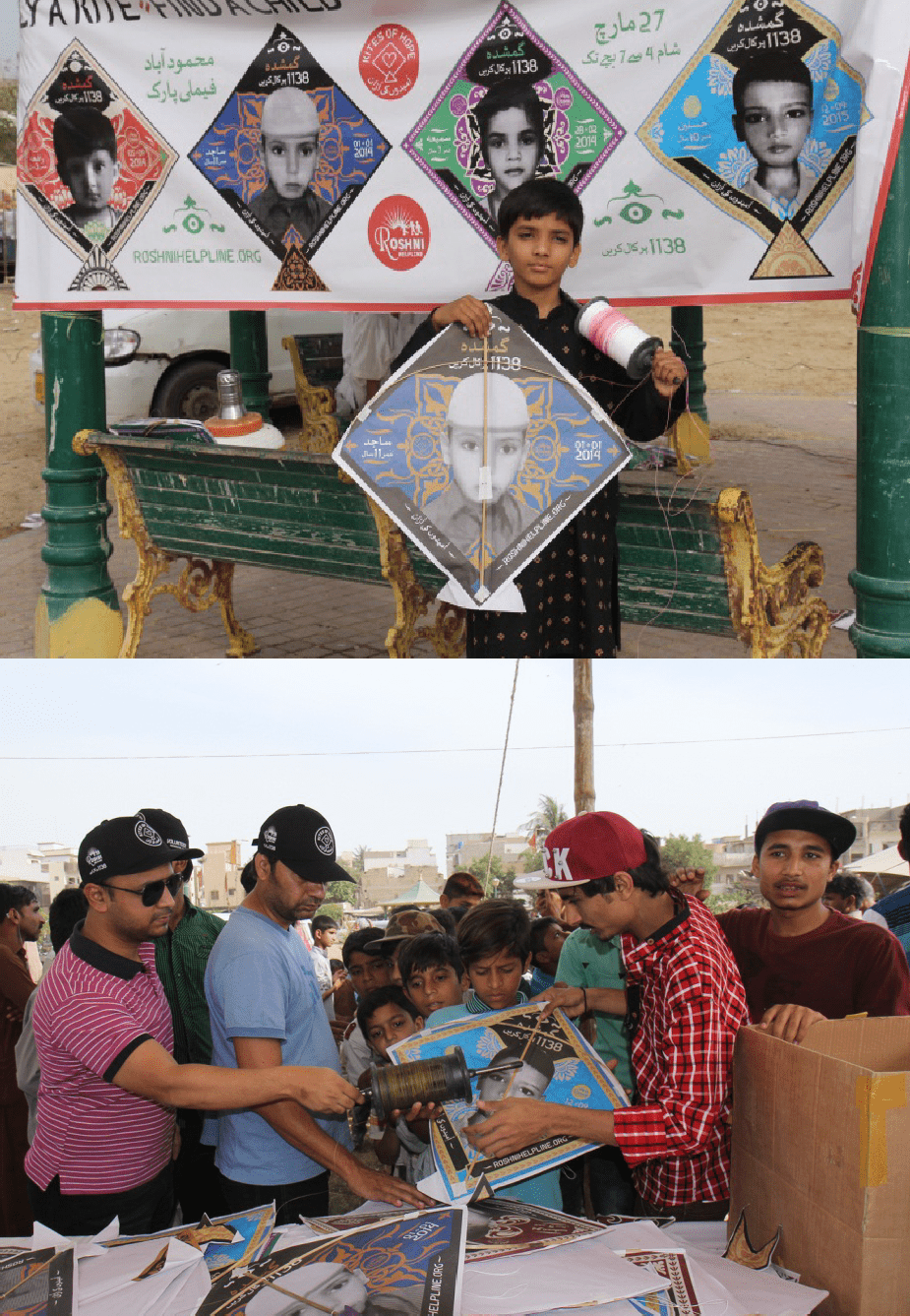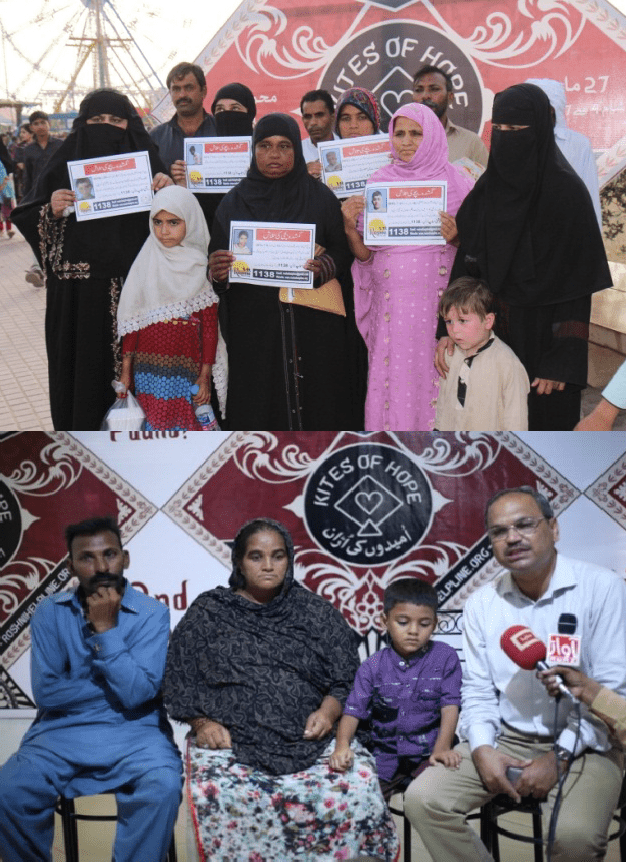Azmeena Rahmatullah
Discourse-Issue-23
All photos courtesy of Spectrum Y&R.
In Pakistan, the coming of spring is often marked by an army of kites that take over the clear blue skies. Traditionally referred to as Basant, this cultural festival is celebrated in the walled city of Lahore, where colorful kites take flight in the skies and kite flying gathers a frenzied momentum. Families, dressed in bright colors, gather on the rooftops to witness the kites dive and rise in a series of swoops and swirls.
Though traditionally associated with Lahore, Basant has caught the imagination of the entire country. The festive spirit during this time of the year is infectious as kite fliers partake in kite battles throughout the country. The hypnotic beat of the local dhols (percussion instruments) are heard as gangs of little boys yell “Bo-kata” after cutting other people’s strings before chasing the fallen kites and claiming them as their reward.
We decided to use this popular kite flying activity to raise awareness about the cause of missing children by turning the kite, a cultural tool, into a social vehicle to reach people in the high impact areas of Karachi. With a population exceeding 22 million, Karachi is a densely populated metropolis of Pakistan. In a city that is home to different ethnicities, faiths, and social classes, around 3,000 children go missing each year. Many of these children are kidnapped for begging on the roads, forced into slave labor or prostitution, or are trafficked. However, others are simply lost and unable to find their way back home.

The “Kites of Hope” with photographs and details of missing children in Karachi, Pakistan.
Research indicates that the 24 hours after a child goes missing are most crucial. With each hour after that, the hope of finding a missing child diminishes. Unfortunately, at the moment the knowledge and information pertaining to missing children is restricted to the affected parties only. Given the alarming statistics, the need was to do something to raise urgency, spread awareness, and ultimately help reunite missing children with their parents.
Spectrum Y& R and Y& R Singapore collaborated with Roshni Helpline, an NGO working for the recovery of missing children in Karachi, to execute a kite flying initiative, “Kites of Hope,” on March 27, 2016. Kites with photographs and information of missing children, along with Roshni Helpline’s number, were designed by the Y&R office in Singapore and printed in Karachi. These unique kites became a coveted item, giving longevity to the information that needed to be spread as wide as possible.
A pre-event digital campaign was also conducted on social media to invite people to the kite flying event, while an announcement van, with “Kites of Hope” branding, informed people about the upcoming kite flying event. Spectrum Y&R also designed merchandise for the volunteers, and the team wore these t-shirts and caps while managing the ongoing event.
Certain areas in Karachi have emerged as the most vulnerable areas from where a high number of children go missing. These include Landhi, Korangi, Baldia Town, Orangi, Lyari and Gulshan-e-Iqbal, to name a few. Most of these areas are under- developed and poverty-stricken localities. “Kites of Hope” was organized in one such locality, Mehmoodabad, where a high number of children go missing.
Yusaf, age 5. Samia, age 7. Rafia, age only 3. These were among the children whose names and photos soared high on the “Kites of Hope” in an effort to reunite them with their families. Red, blue, and green kites bearing photos of missing children and the date of their disappearance were given out to both children and adults who had gathered at the park to celebrate the spring festival of Basant. The sky was filled with our message which was able to travel with the wind. As soon as one kite downed another and fell, crowds roared with delight and chased the fallen kite to claim it.
As an innovative way to locate missing children, the fallen kites helped disseminate information pertaining to missing children in a manner that reached the grassroots level and flowed freely. One after the other, the kites took flight at the event and each kite flier tried to take his kite higher than the others. People at the event were also given information on preventive steps and on urgent action that needs to be taken if a child goes missing.
The kite flying activity at the event not only proved to be engaging for the attendees but also helped in increasing awareness about the issue of missing children. Another equally important objective was to make people aware of Roshni Helpline’s number, so that if any child goes missing in the future, parents and relatives know that they should immediately contact the Helpline. A prompt notification helps the NGO track the missing child, and the likelihood of finding the child also increases.
“I believe such creative ideas will create awareness,” said Mohammad Ali, president of Roshni Helpline. He spoke about the apathetic attitude of local police who do not take swift action when a complaint of a child’s disappearance is brought to them.

Attendees at the “Kites of Hope” event.

TOP: Parents holding posters of their missing children at the “Kites of Hope” event. BOTTOM: Press conferences to announce the recovery of a missing child.
However, since the “Kites of Hope” event, two police stations in the Mehmoodabad area have offered to help Roshni Helpline by inviting them to display posters of missing children inside the police stations.
“Kites of Hope” brought with it a ray of optimism for the families of missing children when a 12-year-old child, Shahmir, was found a week after the event. Relatives of the missing child were present at the event where they came to know about Roshni Helpline, after which they approached the NGO and provided details of their missing child. Roshni was then able to trace the child who was successfully recovered from an edhi home (a foster home), after he was reported missing from the central vegetable market in the Shah Faisal Colony vicinity on March 9, 2016.
The success of the “Kites of Hope” event paved the way for more recoveries when a second missing child, 5-year-old Muzammil, was traced and recovered by Roshni Helpline shortly after the first. Muzammil had been missing for 10 months and 13 days, after he was kidnapped from the Karachi Zoo on July 20, 2015. This recovery was made possible by the timely action of his parents who found out about and contacted Roshni Helpline. The NGO was then able to immediately activate their volunteer network and advise the parents to lodge a report at the Garden Police Station. The team’s tireless efforts paid off on June 1, 2016, when Roshni received an anonymous phone call informing them that the child was seen inside a house in Nazimabad No. 2. Upon confirmation, the police were informed, who raided the house and recovered Muzammil. Some people were also arrested in the process.
This string of successful recoveries was made possible by the awareness that the “Kites of Hope” event was able to spread. These two successful recoveries were followed by yet another recovery of an 8- year-old child, Iftikhar, who went missing 10 months ago. He was traced at an edhi home and subsequently reunited with his family. Following each recovery, press conferences were also hosted by Spectrum Y&R at their Karachi office to increase awareness regarding the issue and recovery of missing children among the public.
This unique kite flying initiative not only helped build awareness by giving missing children’s faces and names greater reach through the sky, but the subsequent recovery of three of these missing children has alerted parents to be vigilant and ensure that urgent action is taken if a child goes missing. High participation from the general public and citywide awareness of Roshni Helpline has resulted in more reporting and inquiries of missing children.
Reuniting the families with their children was indeed the most worthwhile impact and outcome of this kite flying initiative. From electronic media including TV and radio channels, to print media and newspapers, the event was given extensive coverage. The innovative way in which this issue was addressed, the relevance of the initiative, and the urgency of the matter collectively gave way to a positive, long-term impact. The success of the “Kites of Hope” event also brings to light how a cultural icon of spring, the kite, succeeded in bringing people together to raise awareness about a social cause.
“Kites of Hope” is the first of many similar kite flying events that we will be organizing to reunite missing children with their families. You too can join us at www.kitesofhope.org to help us reach out to as many people as we possibly can.
Together, let’s give wings to hope. ◆

